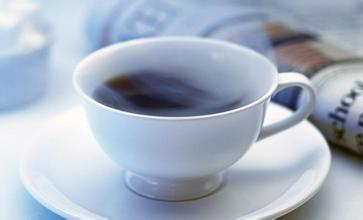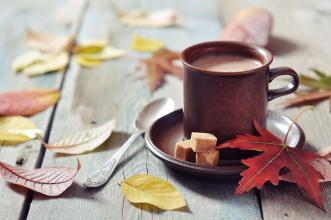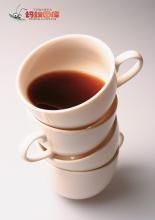Bitter and aromatic Guatemala coffee flavor taste Manor characteristics Fine coffee introduction
United Fruit has its largest estate in Guatemala, and it also owns medium
Inter-American Railway and the only seaport in Guatemala. Driven by the United Fruit Company, the US Ministry of Foreign Affairs began a propaganda war against Guatemala to crack down on the Arbens regime in the name of anti-communism. The Central Intelligence Agency, in cooperation with the opposition among Guatemalan soldiers, launched an operation called Operation PBSUCCESS. [7]
In 1954, Arbens was overthrown and Castillo Armas became the new dictator. The new government immediately invalidated all reforms. Enter the period of transition between the right-wing military government and the literati government. [1]
In 1957, Armas was assassinated and his heir was a soldier who was already known for his bloodshed in the dictatorship of the 1940s. [7]
In 1960, leftist military groups appeared in Guatemala. [1]
In 1982, the leftist guerrillas across the country merged to form the "National Revolutionary Alliance of Guatemala" and armed struggle spread throughout the country. Farmers dissatisfied with the overthrow of the Arbens regime organized a guerrilla group in which more than 100,000 people were killed and millions displaced. In September 1982, the persecution of the local Mayans by the Guatemalan army was close to genocide, and more than 9000 Mayans were killed. Since 1983, persecution on the part of the Government of Guatemala began to decrease and the country began to democratize again. However, the disparity between the rich and the poor has not been solved, and only a small number of people who account for 1% own more than 60% of the arable land and wealth. In 1985, Guatemala reorganized the general election. Indonesia, located between the vast Indian Ocean and Pacific Ocean, is a "country of ten thousand islands" made up of 18108 large and small islands. Java is the fourth largest of these islands. Java, which is surrounded by the sea, has a tropical rain forest climate. There is no change of cold and summer seasons. The annual average temperature is 25 degrees Celsius and the rainfall is abundant. The unique natural conditions make the island's tropical plants dense, evergreen vegetation, coffee, tea, tobacco, rubber, sugar cane, coconut and other products are rich. Java Island has vertical and horizontal rivers and beautiful scenery, which attracts a large number of tourists from all over the world every year. There are more than 100 volcanoes on the island of Java, which are very active not long ago, and Mount Merapi, which shows signs of eruption, is one of them. Mount Merapi, which is 2968 meters above sea level, is the most active among many active volcanoes in Indonesia. Java is the most economically, politically and culturally developed region in Indonesia.
About half of the population of 220 million. Some important cities and places of interest are located on this island. Jakarta, the capital of Indonesia, is the largest city in Southeast Asia, located on the north coast of West Java, with a population of more than 8.3 million. Bandung is located in the Bandung Basin, which is more than 700 meters above sea level in western Java. It is the capital of Indonesia's West Java Province. It is surrounded by mountains, luxuriant plants and a beautiful environment. Yogyakarta, the ancient capital of Indonesia, is the central city of Central Java, and the world-famous Borobudur monument is located in the north of Yogyakarta.
The most important island of Indonesia, the political, economic and cultural center of the country. It is about 970 kilometers from east to west and 160 kilometers from north to south, forming a narrow shape. It covers an area of 126000 square kilometers and has a population of about 124 million (2005 data). Mainly to mountains and hills, there are many volcanoes, there are 58 volcanic peaks above 1800 meters above sea level, of which 14 are above 3000 meters. Mount Semeru, the highest peak on the island, is located in the southeast of the island at 3676 meters above sea level. How wide the basins are in the mountains, many of which are the birthplaces of the ancient kingdoms of Indonesia and are still developed agricultural belts and town centers. The northern coast is an alluvial plain with many man-made ports; the south bank is steep and hilly. Earthquakes and tsunamis are frequent. The climate is hot, with high temperature and rainy weather all year round in the west and dry season in the east. The annual precipitation is about 1500 mm, less than 1000 mm in a few areas and more than 4000 mm in mountainous areas. There are many rivers, and the rivers entering the sea on the north bank are large, mainly Zhi Lion, Zhi Manu, Thoreau, Zitarong, Brantas and so on. The soil on the island is fertile, the natural conditions are good, and the forest cover rate is 23%. The land reclamation rate is 70%, which is the highest in the country. Mineral deposits include oil, coal, manganese, iron, gold, silver, phosphorus, sulfur, iodine and so on. Rice, corn, tea, peanuts, sucrose, kapok, cinchona cream and teak account for 60% to 90% of the national output, as well as rubber, coffee, oil palm, coconut and cocoa. Industries include oil refining, shipbuilding, machinery, metallurgy, rubber, textile, chemical industry, papermaking and so on. With well-developed transportation and 60% to 70% of the country's road and railway mileage, Java coffee beans were well-known in the early years, referring to Arabica coffee formerly produced in Java. It has a strong aroma, low acidity, taste lubrication, mixed with mocha coffee, the resulting "Java mocha mixed coffee" was once popular and became synonymous with top coffee.
At that time, Java coffee sold to Europe was a very special kind of coffee. At that time, it was shipped to Europe and the United States by sailboat, and the distance was long and the speed was slow, so it took a lot of time to transport. In this case, the coffee seems to have undergone a special fermentation and has a very unique taste.
Later, when the ship replaced the sailboat, due to the shortened delivery time, people drank relatively fresh coffee beans. But people who are used to drinking Chen beans are not used to the fresh taste, so they desperately pursue old Java coffee, so that the Indonesian government and some businessmen deliberately store fresh beans in warehouses for one or two years and then sell them to consumers. In fact, compared with fresh beans, the acidity of aged Java beans is close to zero, but the flavor is more intense. Because of the long storage time, the increase in cost and the limited quantity, Java has always been a hot item in the coffee market. In the 1880s, 0 merchants deliberately tampered with some fresh Guatemalan or Venezuelan beans to imitate aged Java for high prices. It is intolerable that 0 merchants dye coffee beans to make them look more like old Java, but there is no doubt that the dyed chemicals are certainly toxic.
Java produces only a small amount of Arabica beans, most of which were imported from Africa after the rust disaster. This kind of coffee has a strong bitter taste after roasting, but its aroma is extremely light. Although it has low acidity and delicate taste, it is rarely used for direct drinking. It is often used to mix mixed coffee or to make instant coffee.

Important Notice :
前街咖啡 FrontStreet Coffee has moved to new addredd:
FrontStreet Coffee Address: 315,Donghua East Road,GuangZhou
Tel:020 38364473
- Prev

Introduction of Indonesian Java Coffee with mild Flavor Flavor and Fine Coffee production area
Located between the vast Indian Ocean and the Pacific Ocean, Indonesia is a country of 18108 islands, of which Java is the fourth largest. Java, which is surrounded by the sea, has a tropical rain forest climate. There is no change of cold and summer seasons. The annual average temperature is 25 degrees Celsius and the rainfall is abundant. The unique natural conditions make the tropical plants on the island
- Next

Flavor and taste characteristics of coffee manor in Tanzania introduction of Kilimanjaro Coffee Bean
The national emblem of Tanzania was developed in 1964 on the basis of the Tanganyika national emblem. The shield in the center is divided into four parts: the top burning torch cuts through the pre-dawn darkness and lights the flame of freedom and hope; it is painted with the Tanzanian flag; the red ground below is crossed with tomahawks and spears; finally, the waters of the Indian Ocean and the lakes in the territory. Shield
Related
- Detailed explanation of Jadeite planting Land in Panamanian Jadeite Manor introduction to the grading system of Jadeite competitive bidding, Red bid, Green bid and Rose Summer
- Story of Coffee planting in Brenka region of Costa Rica Stonehenge Manor anaerobic heavy honey treatment of flavor mouth
- What's on the barrel of Blue Mountain Coffee beans?
- Can American coffee also pull flowers? How to use hot American style to pull out a good-looking pattern?
- Can you make a cold extract with coffee beans? What is the right proportion for cold-extracted coffee formula?
- Indonesian PWN Gold Mandrine Coffee Origin Features Flavor How to Chong? Mandolin coffee is American.
- A brief introduction to the flavor characteristics of Brazilian yellow bourbon coffee beans
- What is the effect of different water quality on the flavor of cold-extracted coffee? What kind of water is best for brewing coffee?
- Why do you think of Rose Summer whenever you mention Panamanian coffee?
- Introduction to the characteristics of authentic blue mountain coffee bean producing areas? What is the CIB Coffee Authority in Jamaica?

